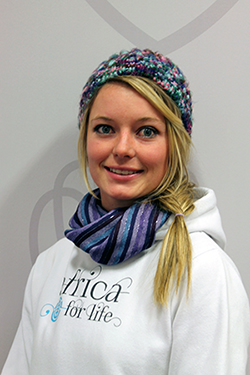
Nicola Theron
Photo: Leonie Bolleurs |
Nicola Theron, a third-year student in the Department of Plant Sciences at the University of the Free State (UFS), will be attending the Youth Ag-Summit in Australia next month.
According to Prof Zakkie Pretorius, researcher in the Department of Plant Sciences, this is a great achievement for the university, given that Nicola is one of only four students from Africa chosen to attend the summit. The selection process was facilitated by Bayer Cropscience.
In her essay, Nicola focused on ‘In field rainwater harvesting’ (IRWH) and its application in informal settlements for the purpose of saving water, as well as of utilising available water to its full potential.
From 24 to 28 August 2015, she will gather with 99 other young leaders from across the world at the Youth Ag-Summit in Canberra, Australia, where they will be discussing their ideas on finding sustainable solutions for the growing global need towards safe and nutritious food.
Young people between the ages of 18 and 25 interested on a personal, professional, and academic level in agriculture, and food security, as well as environmental and social stewardship, were asked to present their ideas on the causes, consequences, and possible solutions for global food security, in an essay of 1500 words.
The judges received more than 2000 essays from 87 countries.